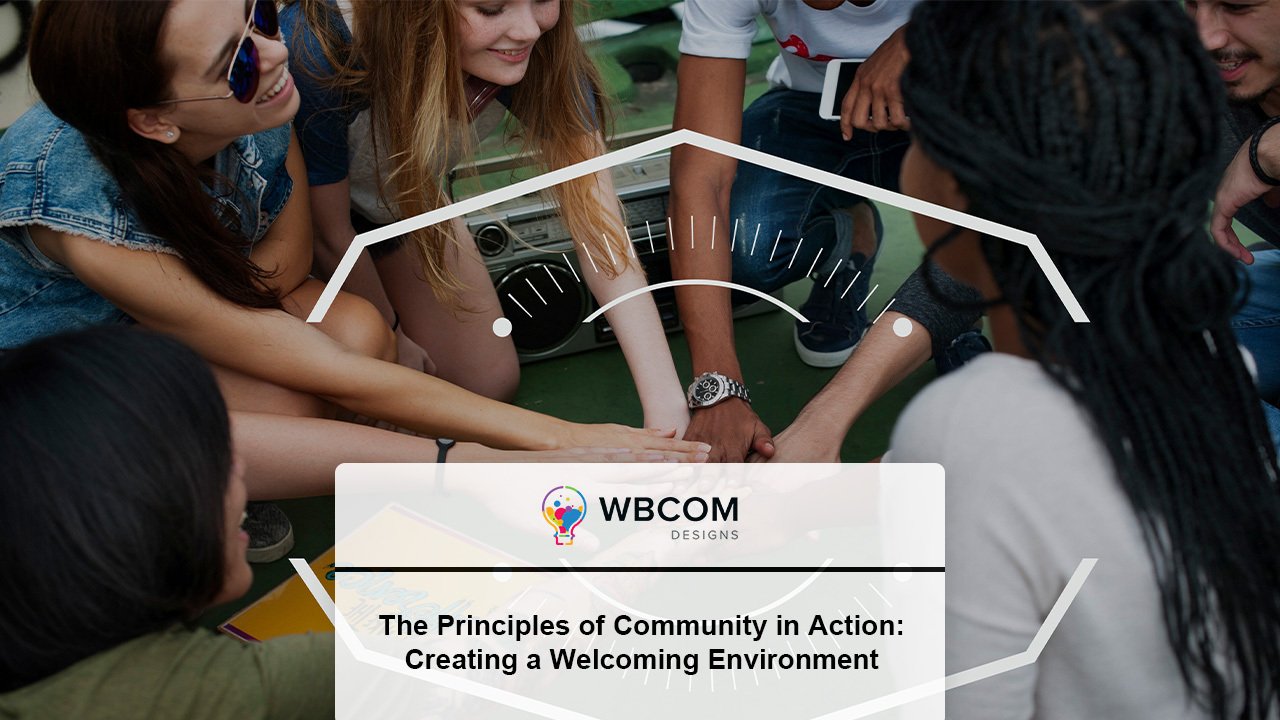Have you ever walked into a room and immediately felt a sense of belonging, as if you were among friends? Or, on the contrary, have you ever found yourself in a place where you felt like an outsider, unwelcome and out of place? Whether we realize it or not, the way we interact with others and the environment around us plays a crucial role in creating a sense of community. In today’s fast-paced world, where people from diverse backgrounds come together in various settings, it’s more important than ever to understand the principles of community and how to apply them in our daily lives. In this blog post, we’ll explore the art of creating a welcoming environment, where everyone feels valued, respected, and included. So, whether you’re a community leader, a business owner, or simply someone who wants to make a positive impact on the world, this post is for you. Join us as we dive into the principles of community in action and discover how we can all contribute to a more welcoming world.
Try Reign Theme DemoBuy Reign BuddyPress Theme and Reign addons bundle add-onto create a highly engaging Community Platform Today!
What are the principles of community?
The principles of community are a set of values and guidelines that guide individuals and groups in creating a supportive and inclusive environment. These principles are applicable in a wide range of settings, including schools, workplaces, neighborhoods, and online communities.
Some of the most common principles of community include respect, inclusion, diversity, equity, and collaboration. Respect involves treating others with kindness and consideration, regardless of differences in background or perspective. Inclusion means actively welcoming individuals of all backgrounds and identities and ensuring that they feel valued and supported. Diversity recognizes and celebrates differences in culture, ethnicity, gender, sexual orientation, and more. Equity involves ensuring that everyone has access to the same opportunities and resources, regardless of differences in identity or background. Collaboration involves working together towards shared goals and building strong relationships with others in the community.
When applied to creating a welcoming environment, community principles can help individuals and groups build stronger relationships and a greater sense of connection with others. By practicing respect, inclusion, diversity, equity, and collaboration, individuals can create a supportive environment where everyone feels valued and heard.
Examples of community principles in action can be seen in a variety of settings. For instance, schools that prioritize diversity and inclusion may offer programs that celebrate different cultures and identities or provide resources and support for students from disadvantaged backgrounds. In the workplace, organizations that promote equity may offer fair pay and opportunities for career advancement to all employees, regardless of gender or ethnicity. Online communities that prioritize collaboration may encourage members to work together on shared projects or provide opportunities for members to share their skills and expertise.
Why is creating a welcoming environment important?
Creating a welcoming environment is important because it has numerous benefits for individuals and communities. When individuals feel welcomed and included, they are more likely to feel a sense of belonging and connection with others. This sense of belonging can have a positive impact on mental health, well-being, and overall happiness. A welcoming environment can also foster collaboration, creativity, and innovation by encouraging individuals to share their ideas and perspectives freely.
In contrast, an unwelcoming environment can have negative effects on individuals and communities. When individuals feel excluded or marginalized, they may experience stress, anxiety, and depression. This can have a ripple effect on their personal and professional lives, leading to decreased productivity, increased absenteeism, and lower job satisfaction. In addition, an unwelcoming environment can lead to a lack of diversity and inclusivity, which can limit opportunities for growth and development.
Examples of negative effects of an unwelcoming environment can be seen in many different settings. For example, a school where students feel unwelcome due to bullying or discrimination may experience decreased academic performance, absenteeism, and high dropout rates. A workplace where employees feel marginalized due to discrimination or harassment may experience high turnover rates, low morale, and decreased productivity. In online communities where members feel excluded or harassed, individuals may disengage or leave the community entirely, leading to a loss of diversity of perspectives and ideas.
How to create a welcoming environment?
Creating a welcoming environment involves taking intentional steps to ensure that all individuals feel valued, respected, and included. Here are some tips for creating a welcoming environment in different settings:
- Workplace: Encourage open communication and active listening, celebrate diversity and promote inclusion, provide equal opportunities for all employees, and implement policies that prevent discrimination and harassment.
- Social gatherings: Create a warm and inviting atmosphere, make introductions and encourage mingling, provide opportunities for individuals to share their experiences and perspectives, and be mindful of any potential barriers to inclusivity, such as language or cultural differences.
- Online communities: Develop clear guidelines and expectations for behavior, foster a sense of community through regular communication and engagement, provide resources and support for members who may be experiencing harassment or exclusion, and actively monitor and address any instances of discrimination or hate speech.
Addressing challenges to creating a welcoming environment
Creating a welcoming environment can be challenging, particularly when there are underlying biases and systemic barriers that contribute to exclusion and marginalization. Here are some common challenges to creating a welcoming environment and strategies for addressing them:
- Unconscious bias: Unconscious biases are implicit associations or attitudes that people have towards others based on characteristics such as race, gender, and ethnicity. These biases can lead to unfair treatment and exclusion of certain individuals or groups. To address unconscious bias, individuals can engage in self-reflection, education, and training to become aware of their biases and learn strategies for overcoming them. Organizations can also implement policies and practices that promote diversity and inclusion, such as blind hiring processes and diversity training for employees.
- Lack of diversity: A lack of diversity can lead to homogeneity and exclusion of individuals who do not fit the dominant group. To address this challenge, individuals and organizations can actively seek out diverse perspectives and experiences, create opportunities for underrepresented groups, and foster a culture of inclusivity and respect for all individuals.
- Discrimination and harassment: Discrimination and harassment can create a hostile and unwelcoming environment for individuals who experience it. To address these challenges, individuals and organizations can implement clear policies and procedures for addressing discrimination and harassment, provide training for employees on how to recognize and prevent these behaviors, and provide resources and support for individuals who experience discrimination or harassment.
- Lack of awareness or understanding: Some individuals may not understand the importance of creating a welcoming environment or the impact that their behavior can have on others. To address this challenge, individuals can educate themselves and others about the benefits of diversity and inclusion, and work to raise awareness of the importance of creating a welcoming environment in their communities and organizations.
Wrapping Up Words | Principles of Community
In conclusion, creating a welcoming and inclusive community is not just a nice thing to do, it’s essential for the well-being of all members. By following the principles of community in action, such as actively listening, valuing diversity, and promoting empathy, we can foster a sense of belonging and connection among individuals. It takes effort and commitment from everyone to create a truly inclusive environment, but the benefits are immeasurable. Let’s strive to create communities where everyone feels valued and respected.







